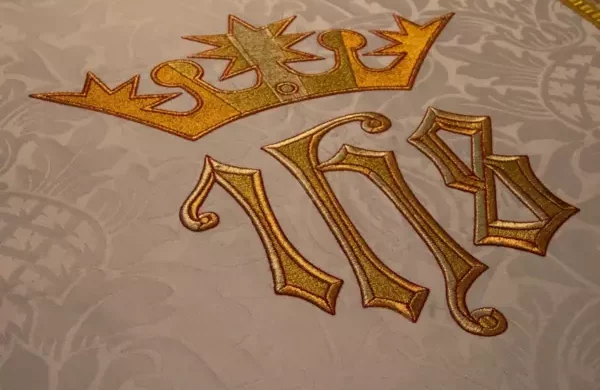
“IHC” and “IHS” are both Christograms representing Jesus Christ, derived from the Greek name “??????” (I?sous). While “IHS” directly represents the first three Greek letters of Jesus’ name, “IHC” uses the same letters with the sigma (?) stylized as “C” in Western Christian tradition. Despite this visual difference, both symbols carry the same meaning and are widely used in Christian art and symbolism to denote reverence for Jesus Christ.
Like this:
Like Loading...
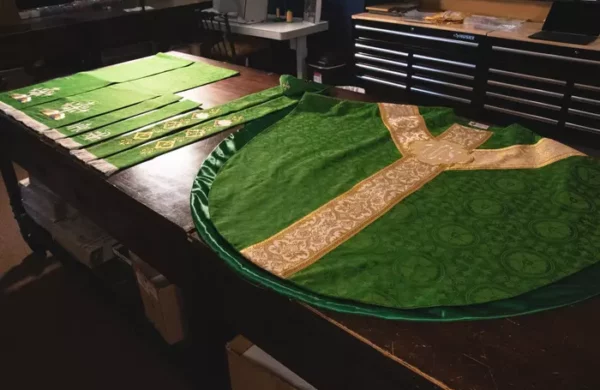
We just finished a special Epiphany set that’s different from our usual work. Using white and green fabrics, we connected the Christmas season to Lent. Our green Luther Rose brocade and white accents make this set truly special for worship. We’re now thinking about a new set with darker green Winchester fabric and elegant Venezia tapestry. Want to see our creations and what’s coming next? Visit our Facebook Page to know more!
Like this:
Like Loading...
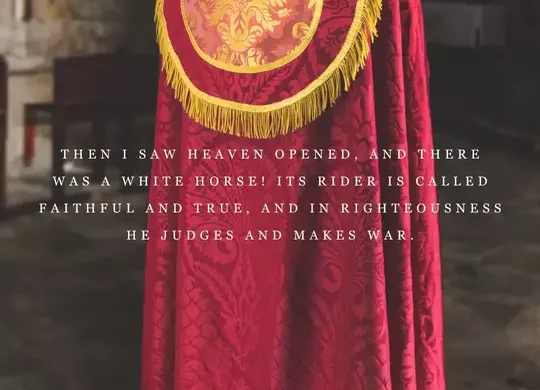
Summer is the ideal time to start your custom liturgical projects and beat the rush. Whether you need an Advent set, Christmas ensemble, Lent arrangement, or All Souls’ set, reaching out now ensures priority. Our team specializes in unique and challenging designs. Don’t wait—contact us today to discuss your needs and create something special.
Like this:
Like Loading...

Vintage church vestment treasures at St. Leo Monastery in Florida, Discovering a cross, made from galloon trim, the Wakefield liturgical fabric and the maniple.
Like this:
Like Loading...
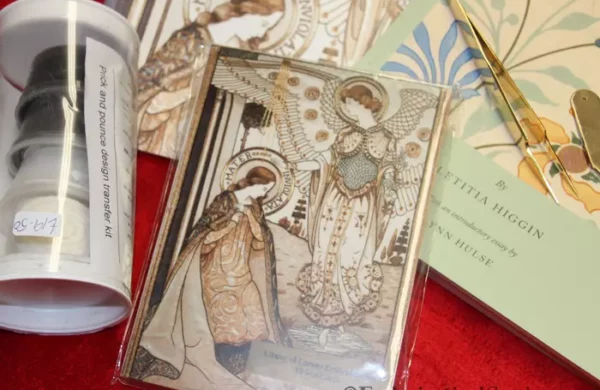
Wishlist of the Royal School of Needlework for years, plans were cancelled by scheduling conflicts. Yet, browsing to their online store provided a silver lining. The Handbook of Embroidery catalog and some enticing embroidery While missing out the classes, the excitement of exploring these ecclesiastical embroidery treasures brings comfort.
Like this:
Like Loading...
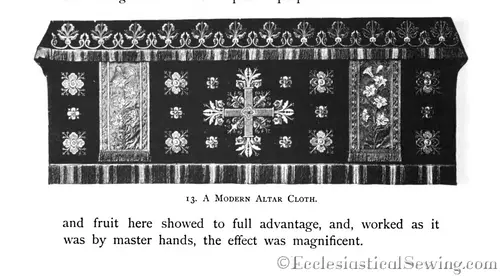
Ideas for reusing these older vestment pieces can be creative and meaningful. Considering remaking older vestments into new pieces, if it should be remade or restored?
Like this:
Like Loading...
Monk Habit Pattern – Benedictine style. It is a simple monk habit that has a high, close-fitting collar, a front placket opening, long 2-piece sleeves, welt pockets on the chest, and at the waist, and side openings to access pant pockets.
Like this:
Like Loading...
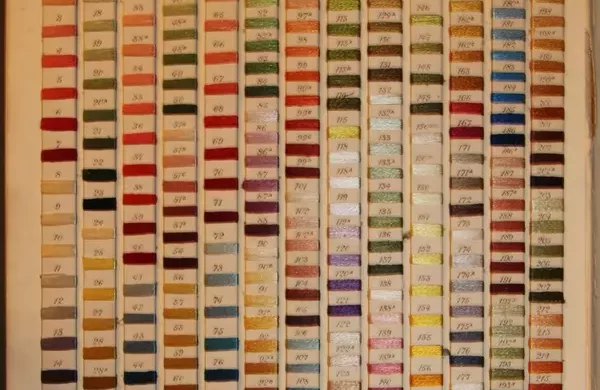
Author notes from original copy
– The color card at the beginning of the book has been inserted by the kind permission of Messrs. Liberty & Co., of Regent Street, London; and A. R. cannot say enough in praise of their colors and the Filo Floss silks sold by them. Many of the colors, she says, are perfect; and this verdict is made after comparing them with many original pictures of the old masters in Italy and elsewhere – the shades of red, green, blue, and browns being spoken of with special praise.
Like this:
Like Loading...
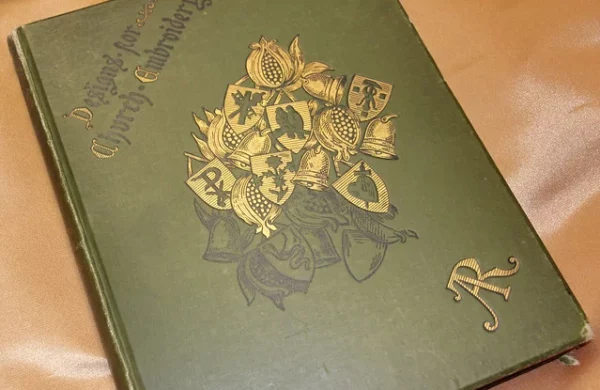
Vintage Vestment Book Treasure: The book title is written diagonally across the upper left corner, and the initials AR are in the lower left corner. The inscription or dedication also lends a bit of mystery: To my friend Alethea Wiel The Designs in this Volume are Dedicated A. R.
Like this:
Like Loading...

Reading about techniques from church embroidery and church vestment books.
Like this:
Like Loading...
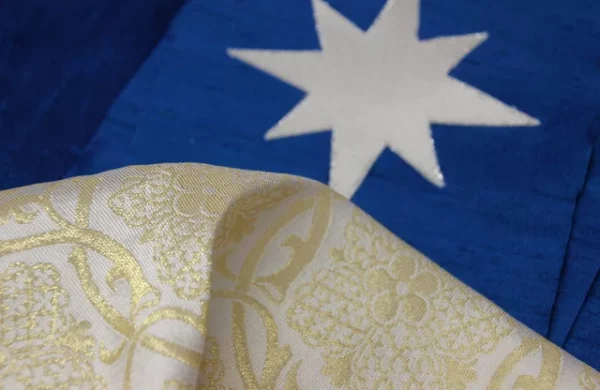
Advent stoles. Using cloth of silver, this star shape will be cut and appliqued to the stole, and outlined with a soft metallic gold thread.
Like this:
Like Loading...
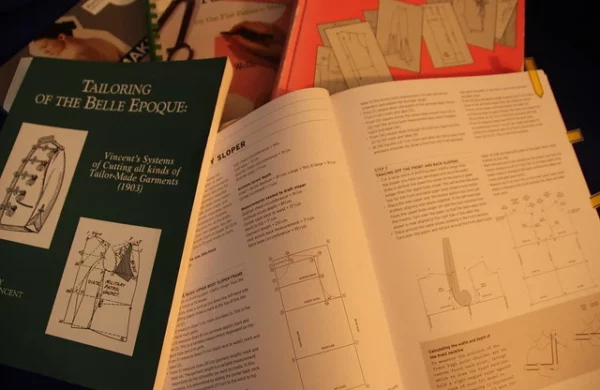
When creating a new vestment pattern. The first rule: make the pattern so that if I were purchasing, the pattern could be opened, and reviewed, and after understanding the instructions and layout, the pattern were ready to use.
Like this:
Like Loading...
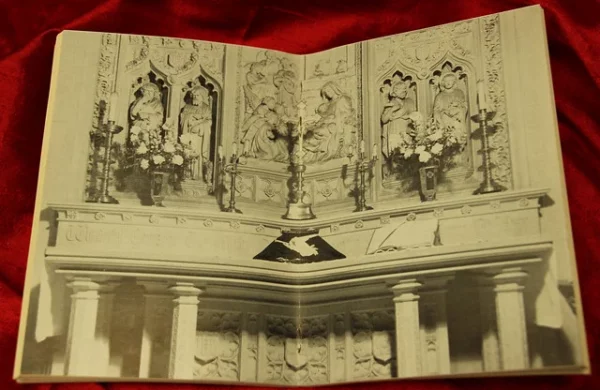
The name of Lucy Vaughn Hayden Mackrille is well known by many involved in Ecclesiastical Sewing and the making of church vestments as the founder of the Washington Cathedral Altar Guild. Her book entitled Church Embroidery and Church Vestments is a valuable resource for seamstresses, providing detailed instructions for making many vestments.
Like this:
Like Loading...
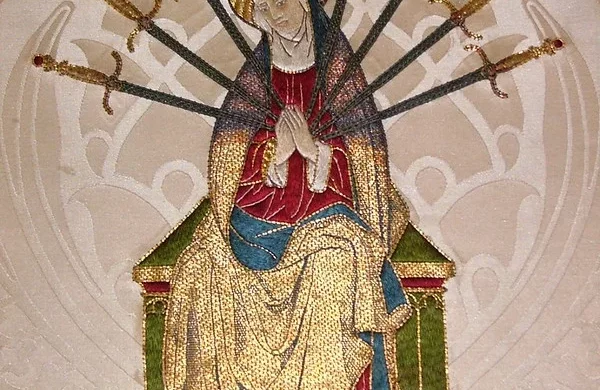
Ninian Comper, also known as John Ninian Comper, embarked on his design career in 1880 at age 16 in Aberdeen School of Art. After joining Charles Kempe’s studio in 1882, he honed his skills. Comper’s apprenticeship with George Frederick Bodley in 1883 marked a significant phase in his development as a church architect. This dedicated training for four years under Bodley and Thomas Garner shaped Comper into a skilled practitioner beyond a mere craftsman.
Like this:
Like Loading...

Vintage Liturgical Embroidery Library Vintage Liturgical Embroidery Library: The Ecclesiastical Sewing workroom is getting a bit of a workout these days. Things are moving and shuffling around, getting ready… Read more Vintage Liturgical Embroidery Library →
Like this:
Like Loading...

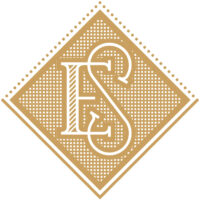













You must be logged in to post a comment.